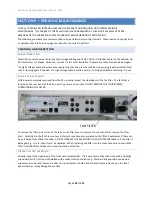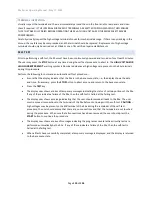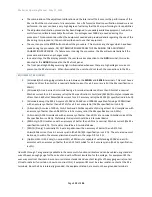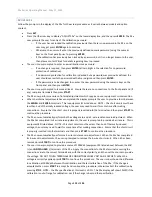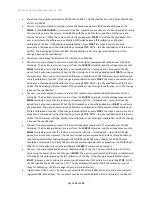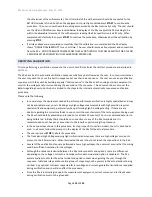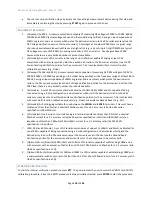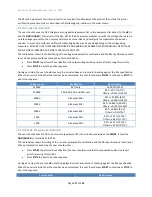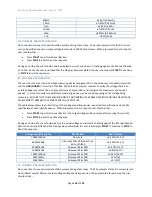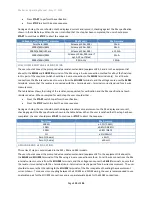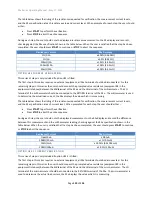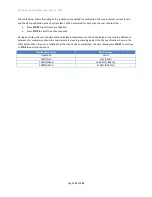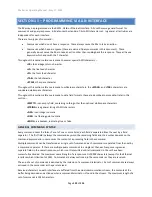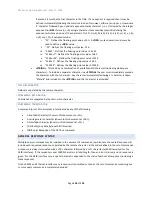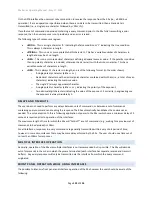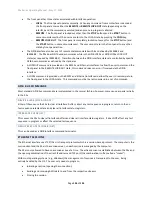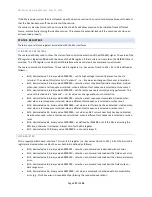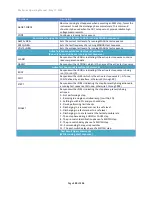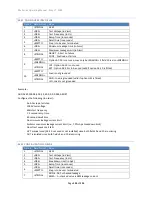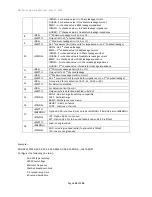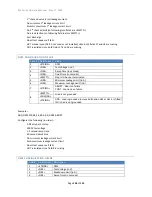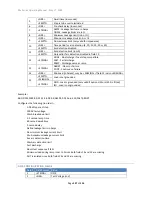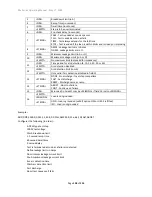
95x Series Operating Manual - May 17, 2022
Page
123
of
155
The 95x does not raise an error if an empty set of commands is received, i.e., if there are two or more consecutive
command terminators.
This is effectively a “do nothing” set of commands.
The 95x does not raise an error if an empty command is received in a set of commands, i.e., there are two or more
consecutive command separators, or a command separator is immediately followed by a command terminator.
This is effectively a “do nothing” command.
If an error is found in a set of commands, then processing of the set of commands is terminated and the remainder
of the set of commands is not decoded or actioned. There is never any response from a set of commands which
contains an error, even if the erroneous command was after a query command in the set.
FIELD SYNTAX
Except for the
<STRING>
format data field (see below), any field may optionally start and/or end with one or more
whitespace characters.
Fields within a command are position dependent, i.e., the exact order is defined for each command. There are two
types of fields in a command -
1.
COMMAND KEYWORD.
Although all command keywords are shown using uppercase characters in this
document, lowercase characters may also be used if desired. Command keywords must exactly match the
defined set for the 95x. The first field in a command is always the command keyword; some commands
have a second command keyword in the second field.
2.
DATA.
There are several types of data, the type used is dependent on the field -
a.
<EMPTY>.
This is a field containing no, or only whitespace, characters between the enclosing
separators. In many commands the user may give an empty field where another format is
expected, this generally has a specific effect defined in the description for each command.
b.
<BOOL>
. This can be the single character “Y” or ‘1’ denoting a true state, or the single character
‘N’ or ‘0’ denoting the false state (the Y or N may be upper
- or lower-case).
c.
<NR1>
. One of three methods may be used to define a
<NR1>
field-
i.
Decimal value. A string of numeric (0 through 9) characters defining a decimal number
without polarity or decimal point (e.g.,
“123” defines the decimal number one hundred
and twenty-three). A value greater than 4294967295 is a syntax error.
ii.
Hexadecimal value.
The user can optionally start this field with the characters “0X” or
the single character “X” (in both cases the “X” character can also be lowercase), in which
case the following data defines the number in hexadecimal format using the numeric
characters and the letters A through F (either upper- or lowercase), as an example 0x12
defines the decimal numeric value 18. A value greater than 0xffffffff is a syntax error.
iii.
Binary value. The user can optionally start this
field with the characters “0B” or the
single character “B” (in both cases the “B” character can also be lowercase), in which
case the following data defines the number in binary format using the “0” and “1”
characters only with the most-significant bit being defined first, as an example
0b00010010 defines the decimal numeric value 18 or hexadecimal value 0x12. In all
cases, leading digits or bits which are not defined are assumed to be zero (e.g.,
0b00010010 is the same as 0b10010). A value greater than 32 bits is a syntax error.
d.
<NR3>
. This is a string of characters defining a floating-point numeric value, optionally having a
polarity, and/or a decimal point, and/or an exponent. Within the limitations of the 95x
command input buffer, there is no limitation on the number of numeric characters before the
decimal, after the decimal or in the exponent. There may be none or one polarity character and,

